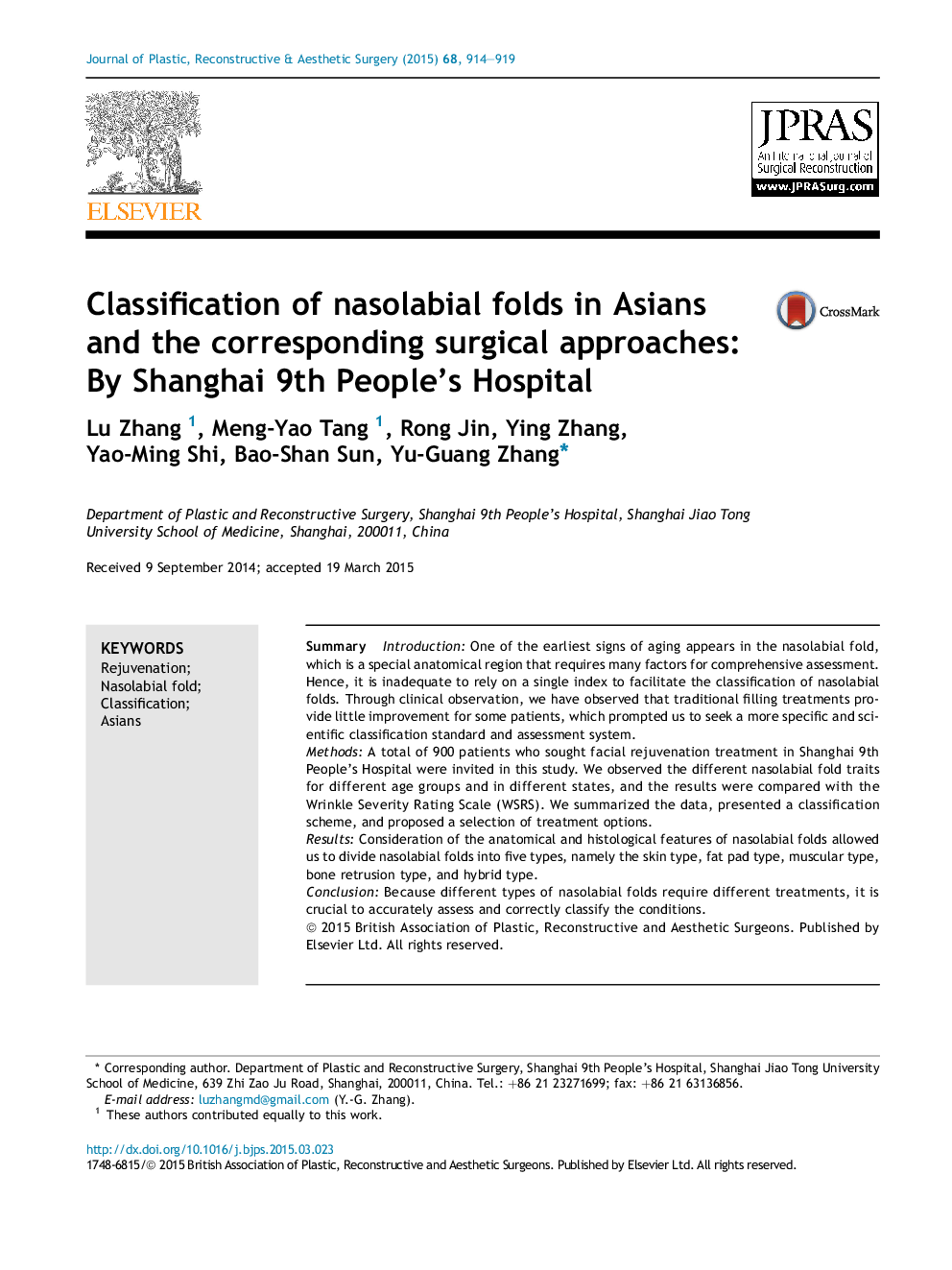| Article ID | Journal | Published Year | Pages | File Type |
|---|---|---|---|---|
| 4117245 | Journal of Plastic, Reconstructive & Aesthetic Surgery | 2015 | 6 Pages |
SummaryIntroductionOne of the earliest signs of aging appears in the nasolabial fold, which is a special anatomical region that requires many factors for comprehensive assessment. Hence, it is inadequate to rely on a single index to facilitate the classification of nasolabial folds. Through clinical observation, we have observed that traditional filling treatments provide little improvement for some patients, which prompted us to seek a more specific and scientific classification standard and assessment system.MethodsA total of 900 patients who sought facial rejuvenation treatment in Shanghai 9th People's Hospital were invited in this study. We observed the different nasolabial fold traits for different age groups and in different states, and the results were compared with the Wrinkle Severity Rating Scale (WSRS). We summarized the data, presented a classification scheme, and proposed a selection of treatment options.ResultsConsideration of the anatomical and histological features of nasolabial folds allowed us to divide nasolabial folds into five types, namely the skin type, fat pad type, muscular type, bone retrusion type, and hybrid type.ConclusionBecause different types of nasolabial folds require different treatments, it is crucial to accurately assess and correctly classify the conditions.
